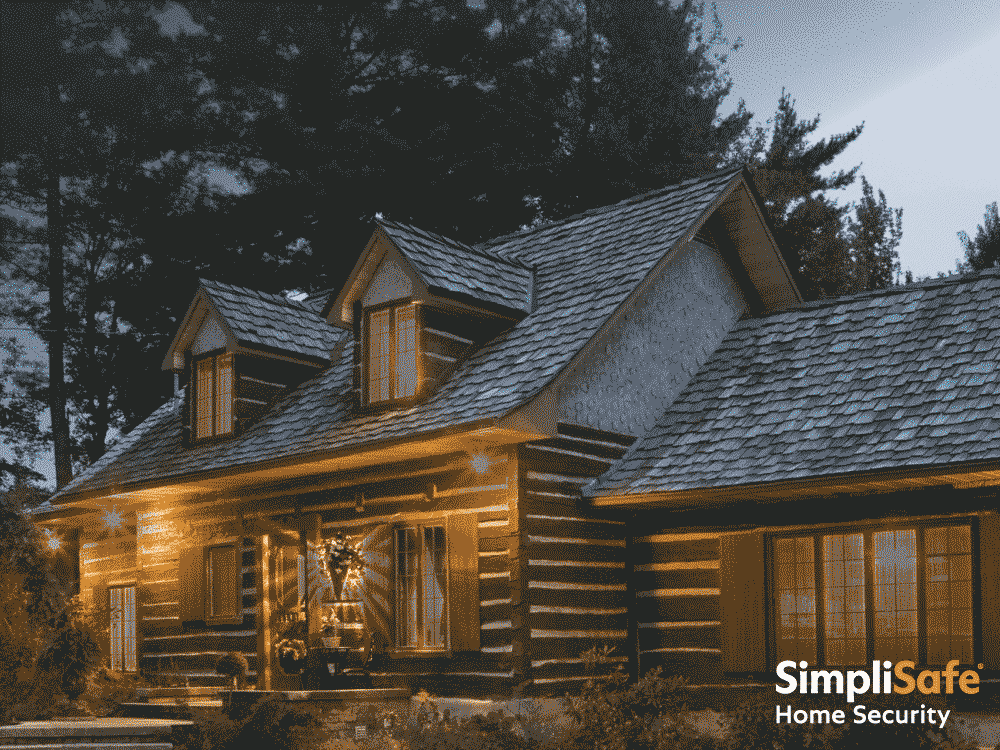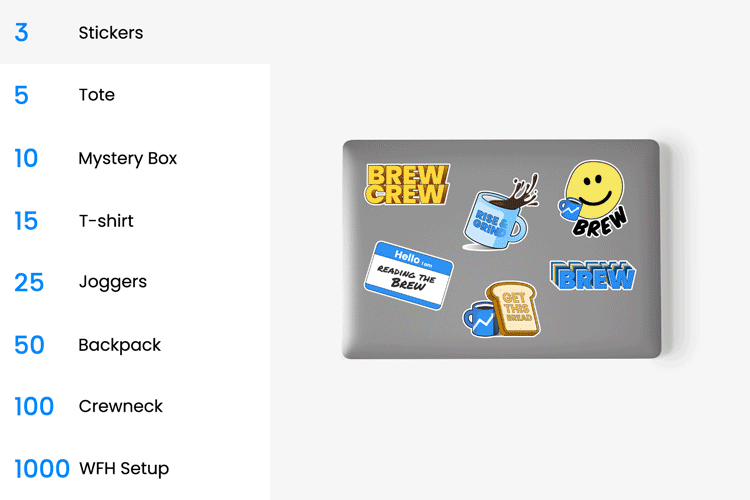Good morning. By now, you’ve eaten most of your leftovers, spent a bunch of money on heavily discounted gifts, and have already gossiped about everyone you went to high school with.
Which means it’s time to look ahead to the holiday season. In today’s special edition newsletter, you’ll read surprising stories about the industries, businesses, and products that thrive in the wintertime—we’re talking road salt, retail, and even Cream of Mushroom Soup. Yeah, we are fun at parties.
No newsletter tomorrow, so we’ll see you back here on Monday to begin the final stretch of 2023.
—Molly Liebergall, Matty Merritt, Sam Klebanov, Cassandra Cassidy, Abby Rubenstein, Neal Freyman
|
|
Carolyn Van Houten/The Washington Post via Getty Images
By thwarting your adult snow day dreams, road salt keeps the wintertime economy humming.
Just one snow day is estimated to cost Northern US states as much as $2.6 billion in lost wages and $870 million in retail sales, according to IHS Global Insight. Politicians have even lost their jobs for flubbing their snowstorm response.
That’s why we’re using so much road salt. It’s usually mined in reserve-rich states like Kansas or imported from Chile or Canada. Ten times more chlorine and caustic soda (sodium hydroxide) gets slathered on roads and sidewalks than goes into processed foods, according to the US Geological Survey.
But there’s a cost
Road salt’s corrosion of vehicles, bridges, and concrete racks up $5 billion in damages annually in the US, more than double the $2.3 billion spent by state and local agencies to plow and salt highways.
And it can also end up in our bodies. After doing its job melting ice, road salt runs off into soil and streams, which can be especially dangerous to freshwater supplies.
- The Flint Water Crisis happened in part because the town started to source drinking water from the road-salt-filled Flint River, which corroded the region’s old pipes and pulled lead into the mix.
- Later that same year (2014), the US Geological Survey found unsafe levels of chloride in 29% of urban streams.
So…what do we do?
Some states are getting creative:
-
“Smart” snowplow software can make more efficient routes that reduce plow time and prevent over-salting.
- Biodegradables like beet or pickle juice, barley leftover from vodka distillation, or cheese brine (shoutout Wisconsin) also melt ice, which can reduce the amount of road salt needed.
However, like regular road salt, natural de-icers don’t work very well at subzero temperatures.
But this year…a strong El Niño is forecast to bring a warmer winter to the snowbelt states for the first time in four years. That’s good news for fans of briny pickles and for the environment, since road salt producers mix in extra ice-melting chemicals like calcium chloride when it gets too frigid outside.—ML
|
|
There’s no place like home for the holidays—and unfortunately, burglars know it too.
Here’s the good news: SimpliSafe’s biggest deals of the year have arrived just in time for Cyber Monday, including 60% off on a new SimpliSafe system, which also gets you a free Wireless Outdoor Security Camera when you enroll in Fast Protect™ monitoring.
SimpliSafe’s smart security sensors detect break-ins with HD cameras inside and outside. Their sensors can even detect fire, flooding, and carbon monoxide. The Smart Alarm camera lets agents see and speak to intruders in your home, encouraging them to vacate ASAP.
Try SimpliSafe risk-free with a 60-day money-back guarantee and protect your happy place year-round.
|
|
South Park/Paramount Global via Giphy
With the amount you’re planning to spend on holiday gifts, you’d probably expect retailers to generate a disproportionate share of their annual sales in the last three months of the year.
They do—but a look at the shopping data reveals that Q4 isn’t as important as you might expect. The holiday quarter in 2022 accounted for 26.8% of the year’s sales, just a hair over the 25% mark if sales were evenly spread across the year, per the US Census Bureau.
Of course, some types of retailers depend on the holiday quarter far more than others. Discretionary retailers (which sell the things you want, but don’t need…aka gifts) rely on Q4 for up to 40% of their yearly sales, according to McKinsey. For department stores, clothing stores, and toy stores, the holiday season really is make-or-break. GameStop, for instance, recorded 37% of its annual revenue last year in the last three months of 2022.
But for other retailers, Q4 isn’t such a big deal. People apparently read throughout the year because book stores only depend on the fourth quarter for 27.4% of sales. People also need to eat food all year long: Q4 accounted for 26.3% of sales for grocery stores.
Meanwhile, gas stations, car dealerships, and building material companies perform worse in the holiday quarter than at other times of the year.
Back to our question in the headline: The holiday quarter is probably overhyped for the overall retail industry, but properly hyped for particular categories of stories.—SK, NF
|
|
Brent Hofacker/Getty Images
It wouldn’t be Thanksgiving without water, mushrooms, vegetable oil, and modified cornstarch.
Those are the first four ingredients listed on America’s answer to the béchamel: Campbell’s Cream of Mushroom Soup, a product that entered American kitchens in the 1950s via the green bean casserole and never left. While it's a pantry staple year round, the holiday season is where it shines—50% of the soup’s annual sales take place between November and January.
The little soup that could. Campbell’s developed its Cream of Mushroom soup in 1934 and marketed it as both a soup and a sauce, according to Salon, in case you wanted a reason to dip your chicken nuggets in it. In 1955, the soup appeared in an Associated Press recipe for a Green Bean Bake, and in the 1960s the dish got rebranded as Green Bean Casserole and slapped on the can’s label. From there, American cooks gravitated to the five-ingredient dish, and now the Green Bean Casserole recipe is viewed 4 million times each Thanksgiving Day, according to Campbell’s.
Big picture: Whether or not you’re part of the 20 million families who will eat the dish this holiday season, CoMS has become as much a part of Thanksgiving as hate-watching the Cowboys. Now let’s get the pineapple casserole the justice it deserves.—CC
|
|
|
Say goodbye to bad sleep. Invest in your rest and sip on something delicious before bed. Beam’s Dream Powder is a naturally sweetened, guilt-free treat that’s clinically shown to improve sleep. It’s made from all-natural ingredients, has zero sugar, and boasts fan-fave flavors like Sea Salt Caramel Dream. Shop Beam’s exclusive MB cyber sale for 50% off.
|
|
Kai-Otto Melau/Getty Images
When it comes to the popularity of backcountry skiing, it’s all downhill from here.
The second-fastest growing sport in the US behind pickleball sees experienced skiers eschew maintained slopes and expensive lift tickets for the undisturbed powder in remote areas. The boom coincided with the pandemic, when social distancing was at a premium: In November 2020, backcountry ski sales shot up 81%, while backcountry snowboard sales soared 146%, according to the trade association Snowsports Industries America.
Backcountry skiers and snowboarders who don’t want to use a helicopter or snowmobile for the ascent need to attach climbing skins to provide more traction for the way up. And there are other added dangers to taking the road less schussed:
- Safety patrols aren’t around, which is why taking avalanche classes and practicing mock rescues are encouraged.
- Climate change is melting snow more quickly, adding an extra degree of difficulty to the already treacherous terrain.
It’s more dangerous, sure, but it’s also better for the planet. If you’re out in nature, that means you’re not at a resort using energy-consuming machines. Resorts also require clear-cutting trees in order to create their slopes; backcountry skiing allows you to carve your own path.—DL
|
|
Love Actually/Universal Pictures
Twenty years later and nothing hits quite like the classics. The Will Ferrell comedy Elf and the romcom that made us suspicious of carolers, Love Actually, were both released on November 7 two decades ago. Their enduring popularity is a testament to how perfectly both films fit into the twinkling, stocking-stuffed world of Christmastime. But also…we really haven’t been given much else to work with since then.
There’s always the pre-2000s classics: Home Alone, White Christmas, or any of the numerous Christmas Carol retellings. But Hollywood hasn’t made a hit holiday film since Elf and Love Actually in 2003.
-
Elf grossed roughly $220 million globally on a $33 million budget, while Love Actually earned $244 million on a budget of about $40 million.
-
Not even the star-studded cast of 2008’s Four Christmases could unseat those two 2003 hits. With a budget of more than Elf’s and Love Actually’s combined, it scored just under $164 million at the box office. And that’s with Sissy Spacek and Kristin Chenoweth cameos!
There’s no shortage of Christmas movies: Lower-budget films have filled the snow-packed gaps that Hollywood blockbusters left behind. This year, Hallmark and Lifetime are expected to drop more than 50 holiday movies, which typically have measly budgets of around $2 million apiece. Netflix has also started churning out “turn it on in the background” Christmas flicks following the unexpected success of its 2017 movie, The Christmas Prince.—MM
|
|
 Take in the view: See the winners of a national landscape photography contest. Take in the view: See the winners of a national landscape photography contest.
 Watch: Learn how some of America’s favorite junk foods almost disappeared. Watch: Learn how some of America’s favorite junk foods almost disappeared.
 Enjoy part two: Here are the 25 best movie sequels of all time. Enjoy part two: Here are the 25 best movie sequels of all time.
 Decorate: These are the home design trends experts say will dominate next year. Decorate: These are the home design trends experts say will dominate next year.
 Electric deals: For Black Friday, Upway is holding a huuuge sale on their top-notch selection of e-bikes—up to $1.2k off. All rigorously inspected, tuned up, and delivered straight to your doorstep. Get movin’.* Electric deals: For Black Friday, Upway is holding a huuuge sale on their top-notch selection of e-bikes—up to $1.2k off. All rigorously inspected, tuned up, and delivered straight to your doorstep. Get movin’.*
*A message from our sponsor.
|
|
Brew Crossword: If you’re sick of thinking about gift ideas or sick at the concept of eating any more leftover stuffing, give your brain something else to do and play our crossword.
Open House
Welcome to Open House, the only newsletter section that is sorta doing its own version of Planes, Trains, and Automobiles. We’ll give you a few facts about a listing and you try to guess the price.
 AKMLS/Zillow AKMLS/ZillowToday’s home comes with its own island: 11.5-acre Big Gull Island, sitting just off the coast of Sitka, Alaska, about halfway between Seattle and Anchorage. To get to it, you’ll have to fly into Sitka and take a boat to the island. But once you complete the journey, you’ll find amenities including:
- 4 beds, 5 baths
- Tons of windows to capture the limited yearly natural light
- A whole lot of fishing
How much for the northern escape?
|
|
ADVERTISE
//
CAREERS
//
SHOP
//
FAQ
Update your email preferences or unsubscribe
here.
View our privacy policy
here.
Copyright ©
2023
Morning Brew. All rights reserved.
22 W 19th St, 4th Floor, New York, NY 10011
|
|





.gif)






